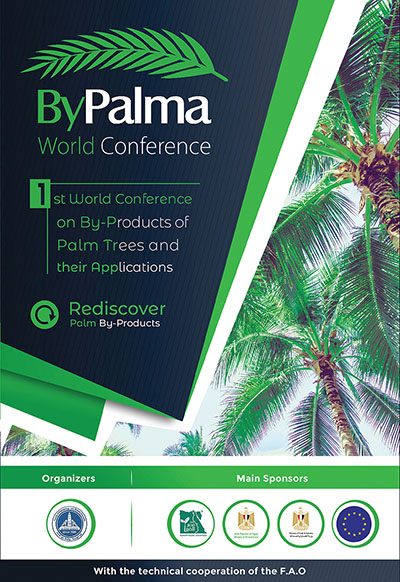Tool path strategies for single point incremental forming of fiber-reinforced thermoplastic sheets
RATH Jan-Erik, SCHÜPPSTUHL Thorsten
download PDFAbstract. Continuous fiber-reinforced thermoplastics (FRTP) are gaining increasing interest as a lightweight material. However, production processes such as thermoforming rely on costly molds, making them unsuitable for individual parts or small series production. Therefore, realizing an incremental sheet forming (ISF) process for FRTP is very desirable. As direct application of ISF to FRTP is impossible, researchers placed the FRTP between two metal sheets, allowing it to slide between them during single point incremental forming (SPIF). So far, only traditional tool path strategies for metal SPIF, such as the z-level or the spiral approach, have been used, which do not consider the draping requirements of woven reinforcement fibers. To optimize the forming process and prevent the development of wrinkles or other defects in the organo sheet, we propose and test novel tool path strategies for the SPIF of an FRTP sandwiched between two metal sheets. Results show that the proposed strategies have a positive impact on part quality, as fiber orientation-based tool path approaches show less wrinkling and higher part accuracy in SPIF without support.
Keywords
Composite, Fiber Reinforced Plastic, Incremental Sheet Forming, Tool Path
Published online 4/24/2024, 10 pages
Copyright © 2024 by the author(s)
Published under license by Materials Research Forum LLC., Millersville PA, USA
Citation: RATH Jan-Erik, SCHÜPPSTUHL Thorsten, Tool path strategies for single point incremental forming of fiber-reinforced thermoplastic sheets, Materials Research Proceedings, Vol. 41, pp 641-650, 2024
DOI: https://doi.org/10.21741/9781644903131-71
The article was published as article 71 of the book Material Forming
![]() Content from this work may be used under the terms of the Creative Commons Attribution 3.0 license. Any further distribution of this work must maintain attribution to the author(s) and the title of the work, journal citation and DOI.
Content from this work may be used under the terms of the Creative Commons Attribution 3.0 license. Any further distribution of this work must maintain attribution to the author(s) and the title of the work, journal citation and DOI.
References
[1] M. Neitzel, P. Mitschang, U. Breuer, Handbuch Verbundwerkstoffe: Werkstoffe, Verarbeitung, Anwendung, 2nd ed., Hanser, München, 2014.
[2] K. Bilisik, N.S. Karaduman, N.E. Bilisik, Fiber Architectures for Composite Applications, in: R. Fangueiro, S. Rana (Eds.), Fibrous and Textile Materials for Composite Applications, 1st ed., Springer Singapore, Singapore, 2016, pp. 75–134.
[3] P. Boisse, R. Akkerman, P. Carlone, L. Kärger, S.V. Lomov, J.A. Sherwood, Advances in composite forming through 25 years of ESAFORM, Int J Mater Form 15 (2022). Https://doi.org/10.1007/s12289-022-01682-8
[4] S.G. Hancock, K.D. Potter, The use of kinematic drape modelling to inform the hand lay-up of complex composite components using woven reinforcements, Compos. – A: Appl. Sci. Manuf. 37 (2006) 413–422. https://doi.org/10.1016/j.compositesa.2005.05.044
[5] A. Al-Obaidi, A. Kunke, V. Kräusel, Hot single-point incremental forming of glass-fiber-reinforced polymer (PA6GF47) supported by hot air, J. Manuf. Process. 43 (2019) 17–25. https://doi.org/10.1016/j.jmapro.2019.04.036
[6] L. Ben Said, The incremental sheet forming; technology, modeling and formability: A brief review, Proc. Inst. Mech. Eng. E: J. Process Mech. Eng. 236 (2022) 2729–2755. https://doi.org/10.1177/09544089221093306
[7] P. Martins, L. Kwiatkowski, V. Franzen, A.E. Tekkaya, M. Kleiner, Single point incremental forming of polymers, CIRP Annals 58 (2009) 229–232. https://doi.org/10.1016/j.cirp.2009.03.095
[8] C. Hou, X. Su, X. Peng, X. Wu, D. Yang, Thermal-Assisted Single Point Incremental Forming of Jute Fabric Reinforced Poly(lactic acid) Biocomposites, Fibers Polym. 21 (2020) 2373–2379. https://doi.org/10.1007/s12221-020-1016-0
[9] M. Fiorotto, M. Sorgente, G. Lucchetta, Preliminary studies on single point incremental forming for composite materials, Int. J. Mater. Form. 3 (2010) 951–954. https://doi.org/10.1007/s12289-010-0926-6
[10] X. Xiao, J.-J. Kim, S.-H. Oh, Y.-S. Kim, Study on the incremental sheet forming of CFRP sheet, Compos. – A: Appl. Sci. Manuf. 141 (2021) 106209. https://doi.org/10.1016/j.compositesa.2020.106209
[11] P. Xu, X. Li, F. Feng, X. Li, Y. Yang, Experimental and numerical studies on two-point incremental forming of woven fabric composite sheet, J. Manuf. Process. 85 (2023) 205–215. https://doi.org/10.1016/j.jmapro.2022.11.049
[12] A. Al-Obaidi, A. Graf, V. Kräusel, M. Trautmann, Heat supported single point incremental forming of hybrid laminates for orthopedic applications, Procedia Manuf. 29 (2019) 21–27. https://doi.org/10.1016/j.promfg.2019.02.101
[13] R. Emami, M.J. Mirnia, M. Elyasi, A. Zolfaghari, An experimental investigation into single point incremental forming of glass fiber-reinforced polyamide sheet with different fiber orientations and volume fractions at elevated temperatures, J. Thermoplast. Compos. Mater. 36 (2022) 1893-1917. https://doi.org/10.1177/08927057221074266
[14] R. Conte, G. Serratore, G. Ambrogio, F. Gagliardi, Numerical analyses of long fiber–reinforced polymeric sheets processed by Single Point Incremental Forming, Int. J. Adv. Manuf. Technol. 123 (2022) 1203–1214. https://doi.org/10.1007/s00170-022-10212-4
[15] J.-E. Rath, L.-S. Schwieger, T. Schüppstuhl, Robotic Die-Less Forming Strategy for Fiber-Reinforced Plastic Composites Production, Procedia CIRP 107 (2022) 1281–1286. https://doi.org/10.1016/j.procir.2022.05.145
[16] J.-E. Rath, R. Graupner, T. Schüppstuhl, Processing Strategies for Dieless Forming of Fiber-Reinforced Plastic Composites, Machines 11 (2023) 365. https://doi.org/10.3390/machines11030365
[17] J.-E. Rath, T. Schüppstuhl, Investigation of Metal Wire Mesh as Support Material for Dieless Forming of Woven Reinforcement Textiles, JMMP 7 (2023) 182. https://doi.org/10.3390/jmmp7050182

































